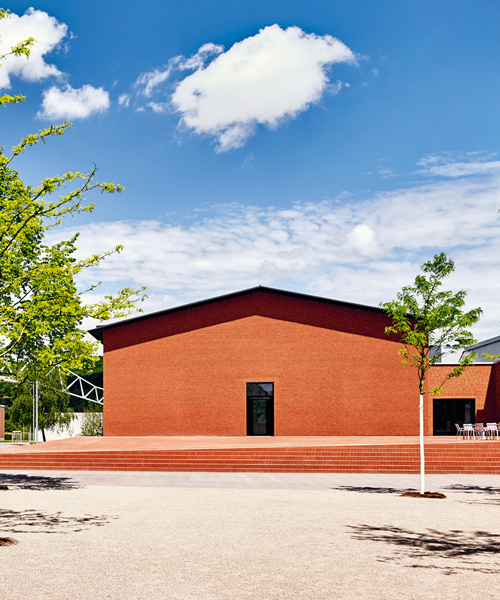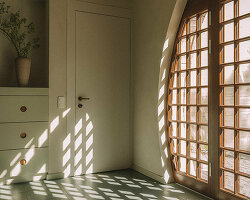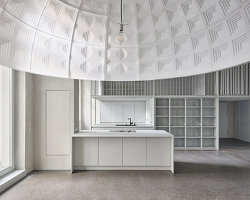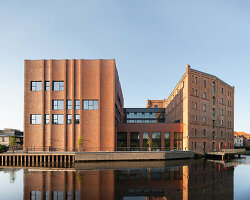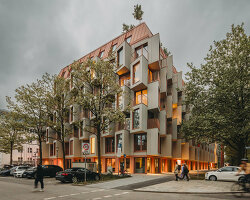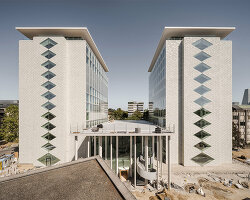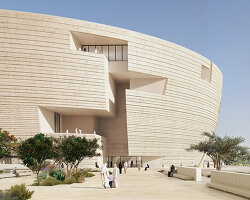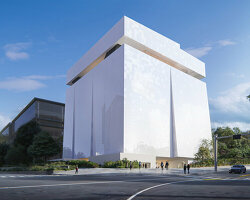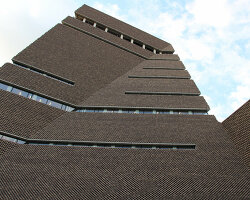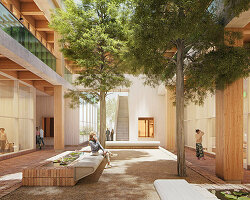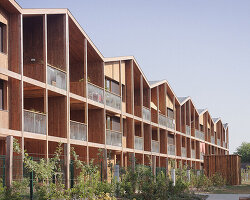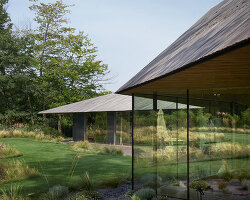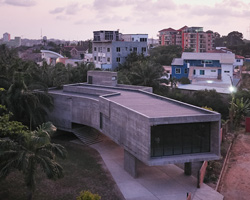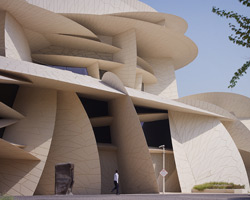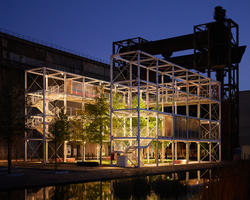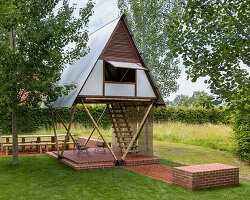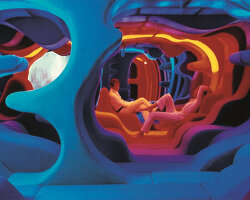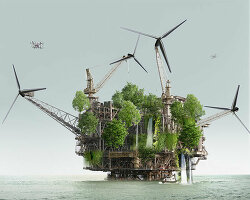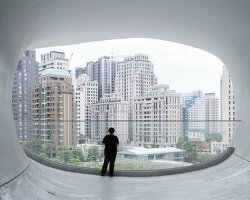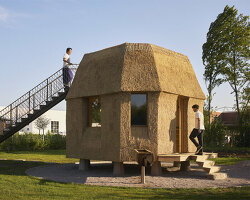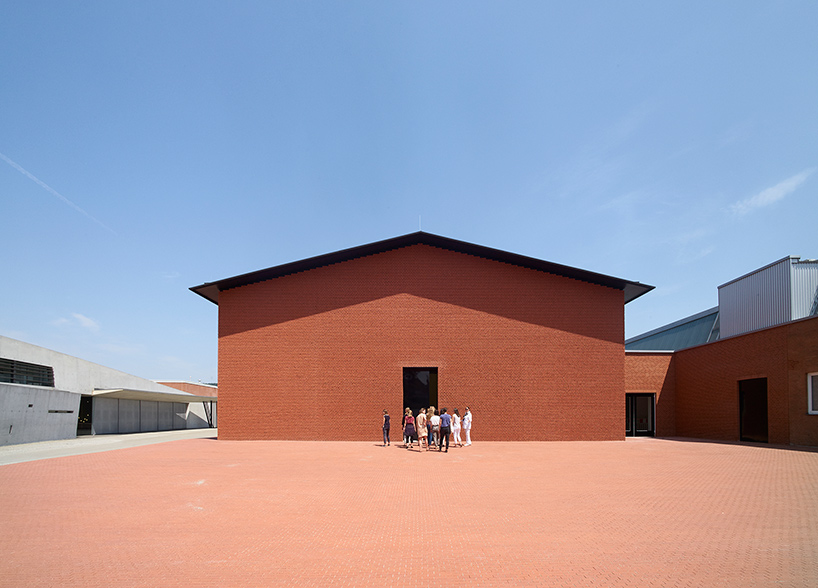
the VITRA campus has welcomed a new building completed by basel-based architecture studio herzog & de meuron. named the ‘vitra schaudepot’, the structure provides the institution with a venue for publicly presenting key objects from its extensive collection. the addition of the building opens up a second entry point to the campus to the south, enhancing connections to the neighboring urban centers of basel and weil am rhein. the project also creates a new public space that incorporates zaha hadid’s fire station, completed in 1993.
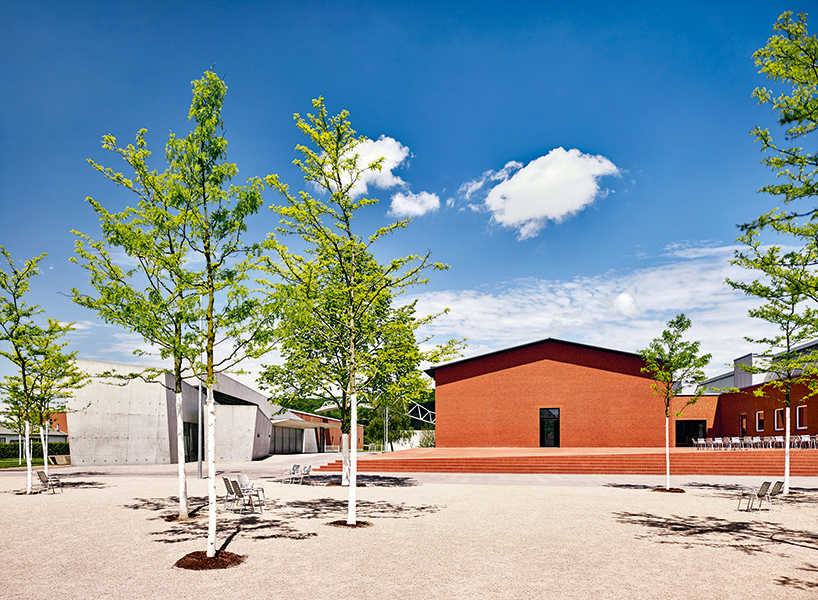
the building is fronted by a public forecourt that connects the building with the rest of the campus
image © vitra design museum | main image © VITRA design museum, julien lanoo
the schaudepot is fronted by a raised, public forecourt that connects the building with the remainder of the campus. its design contrasts with the dynamic contours of hadid’s fire station while corresponding to the brick factory buildings completed by álvaro siza in 1992. externally, the new structure presents itself as a monolithic volume constructed from hand-broken bricks, characterized by a completely windowless façade and a simple gable roof. this simple and dignified appearance is intended to reflect the cultural worth of the objects it stores within. internally, the building offers ideal conservational conditions for the preservation of the collection’s valuable pieces.
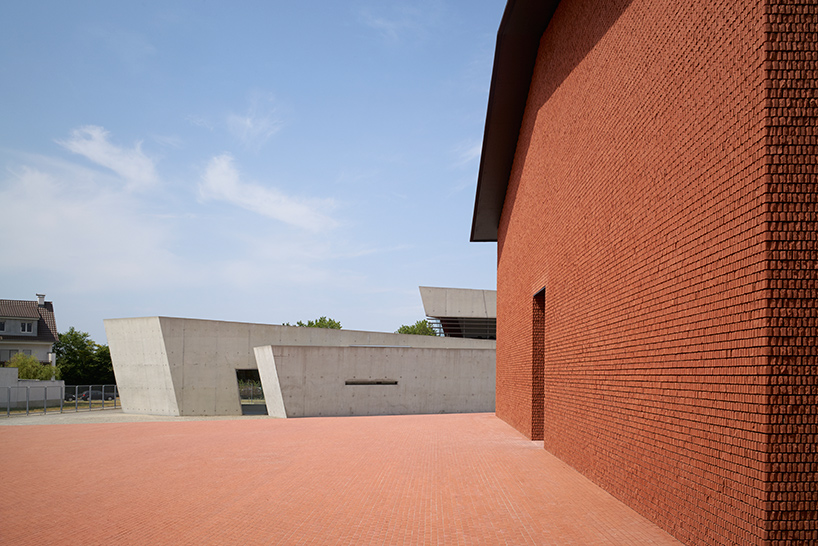
the schaudepot neighbors zaha hadid’s fire station, completed in 1993
image © VITRA design museum
the building is modest in comparison to the array of architecture also on site. the original plan was to locate the new storeroom below ground as a spatial extension to the existing storage basement below the 1960’s sawtooth factory. in particular in the wake of the financial crisis, VITRA’s founder rolf fehlbaum opted for a subtle architectural statement instead of an extravagant eye-catcher. instead, the architects convinced fehlbaum for an above-ground facility that would in result, be less costly. at closer look, the masonry itself assumes a storage and presentation function of sorts – as a stacked ‘display’ of broken bricks, each visible and distinctive due to the unique fracture pattern.
‘the VITRA campus is characterized by its architectural diversity, which reflects rolf fehlbaun’s insatiable curiosity and love for contemporary architecture and design. we have been able to contricute two buildings. first the vitrahaus, iconic and visible from afar, which opened in 2010, and now the schaudepot, which bears practically no traces of its makers. it was in fact originally planned as an underground warehouse, without any form of architectural expression. together with rolf fehlbaum, however, we finally opted for an archetipical architecture that reveals little of its origins: its period or the architects behind it.’ – jacques herzog and pierre de meuron, founding partners, herzog & de meuron

image © designboom
the main hall is defined by a regular gridded arrangement of fluorescent tubes on the ceiling, which evenly illuminate the interior. this large volume houses the permanent exhibition, as well as temporary displays related to the collection. the presentation is divided into three areas with a total of around 1,600 square meters. the ground floor contains the main hall where the extensive permanent exhibition is structured chronologically. here, the central focus is a selection of more than 400 key pieces of furniture design, with rare works included alongside lesser-known or anonymous objects, prototypes, and experimental models. detailed information on the objects is communicated in a digital catalogue accessible via smartphone or tablets.
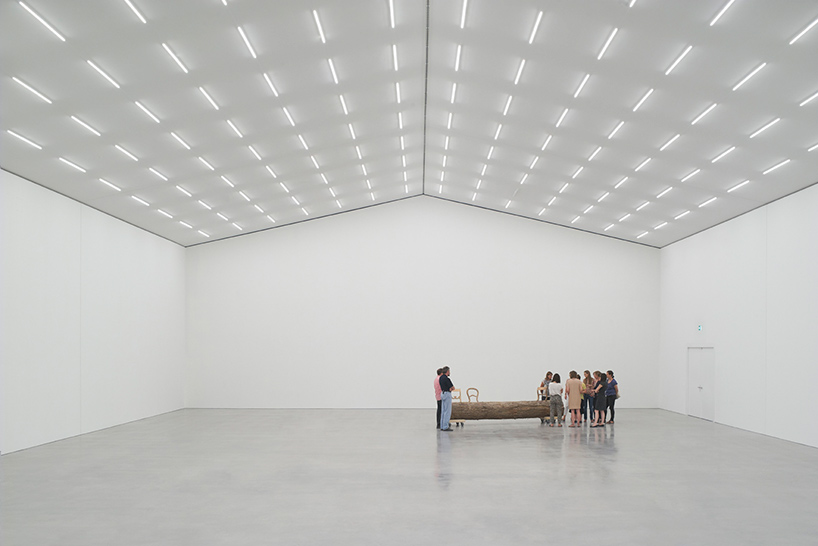
the main hall is defined by a gridded arrangement of fluorescent tubes on the ceiling
image © vitra design museum, julien lanoo
a further section, which contains wardrobes, sanitary facilities, and a café, links the building to the restoration workshop, the library, and the offices of the vitra design museum. a large window connects the main hall to the lower ground floor, where visitors are able to see the other parts of the collection. these existing repositories remain in operation, becoming part of the museum’s overall presentation.
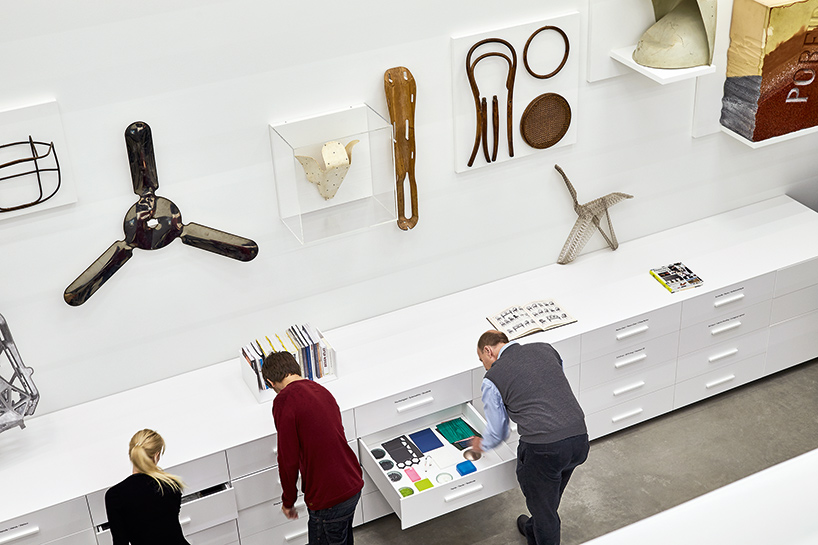
VITRA’s collection ranks among the most important holdings of furniture design worldwide
image © vitra design museum
VITRA’s collection ranks among the most important holdings of furniture design worldwide. it contains around 7,000 pieces of furniture, more than 1,000 lighting objects and numerous archives, as well as the estates of such designers as charles & ray eames, verner panton and alexander girard. although the main museum building by frank gehry from 1989 was originally conceived to house the collection, the space is primarily used to stage major exhibitions. consequently, until now, the museum’s collection has never been on permanent display.
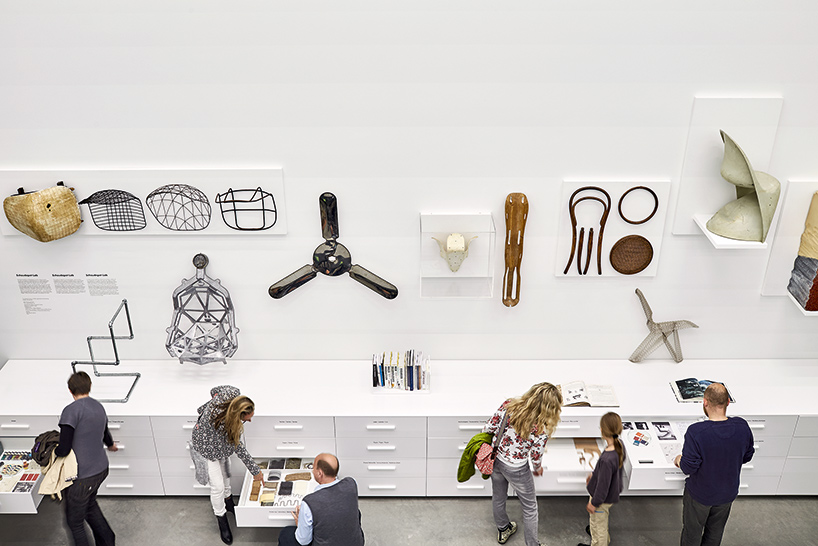
the collection contains around 7,000 pieces of furniture, and over 1,000 lighting objects
image © vitra design museum
the centerpiece of herzog & de meuron’s design is a permanent exhibition of more than 400 key pieces of modern furniture design, dating from 1800 to the present day. the objects shown include early bentwood furniture, icons of classical modernism by le corbusier, alvar aalto and gerrit rietveld, along with colorful plastic objects from the pop era, and recent designs produced with a 3D printer. this presentation is complemented by smaller temporary exhibitions on themes related to the collection, beginning with a look at the ‘radical design’ movement of the 1960s. on the lower ground level, the building offers insights into additional focal points of the collection, such as scandinavian and italian design, the lighting collection, and the estate of charles and ray eames.
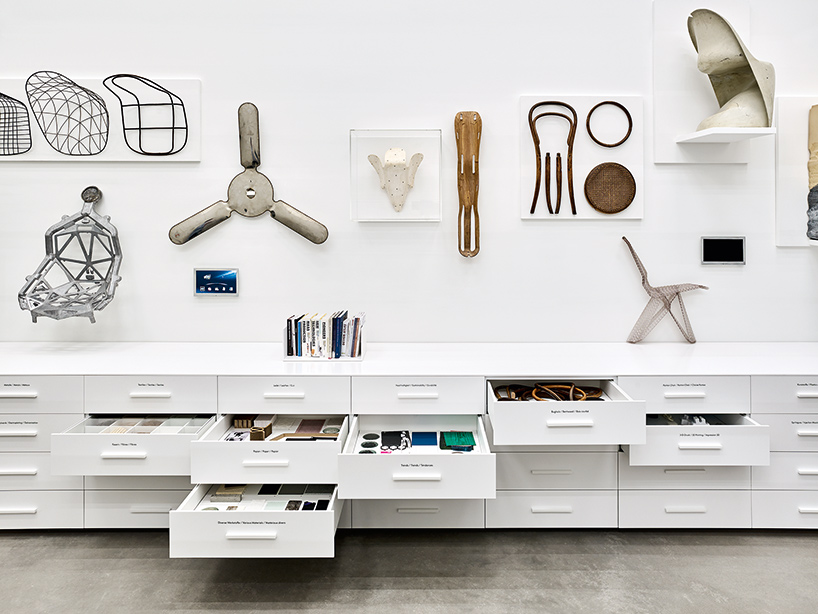
the presentation is divided into three areas with a total of around 1,600 square meters
image © vitra design museum
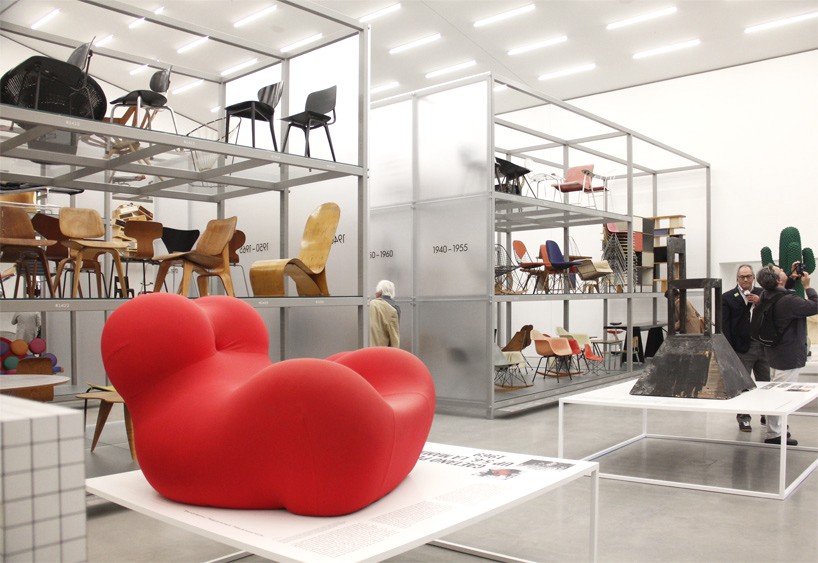
radical design: 04.06 – 17.11.2016
image © designboom
the first temporary exhibition held inside the schaudepot is dedicated to radical design – an italian movement that reached its peak at the end of 1960s and the beginning of 1970s. recognized as one of the most important avant-garde movements, their unconventional design vocabulary, manifestos and utopian ideas protested against functionalism and the established taste in design and architecture. in collaboration with gufram, designers such as piro gilardi, studio65 used the material polyurethane foam and latex rubber coating in their pieces and thus, achieved a break-through in design freedom.
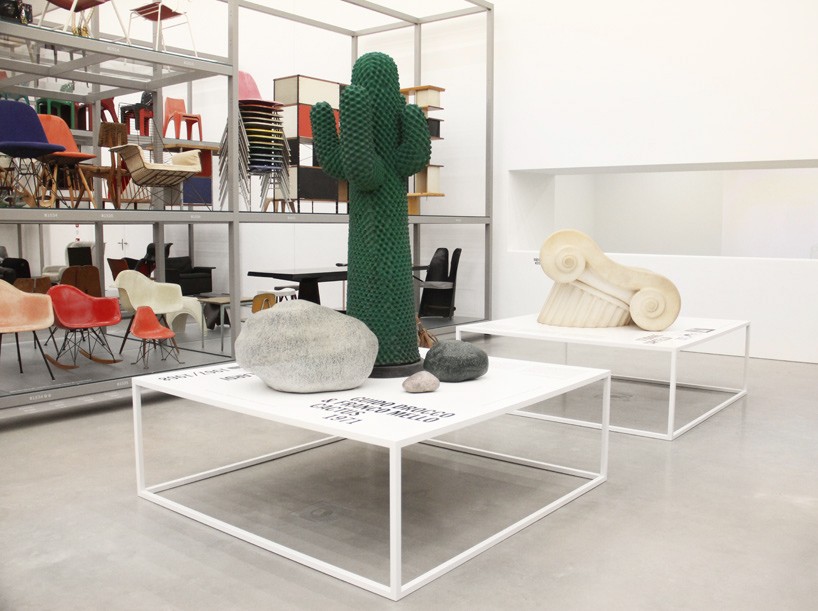
image © designboom
with the opening of the ‘schaudepot’, the vitra design museum is expanding both its exhibition space and its program. frank gehry’s museum building will continue to be used for the large-scale temporary exhibitions, while the vitra design museum gallery shows smaller, experimental projects. the ‘schaudepot’ displays the permanent exhibition as well as one temporary exhibition, forming one of the world’s largest permanent exhibitions and research facilities on modern furniture design.
see designboom’s previous coverage of the project here.
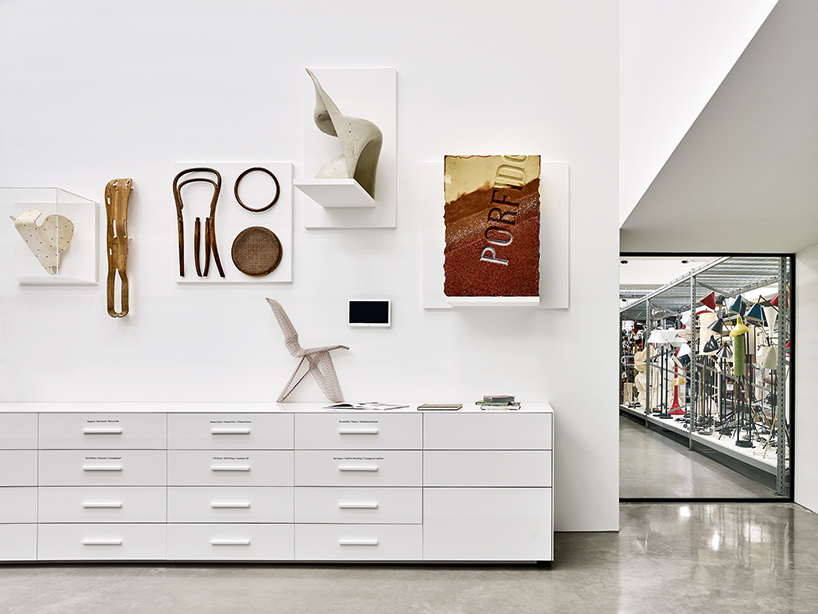
visitors are able to see other parts of the collection
image © vitra design museum
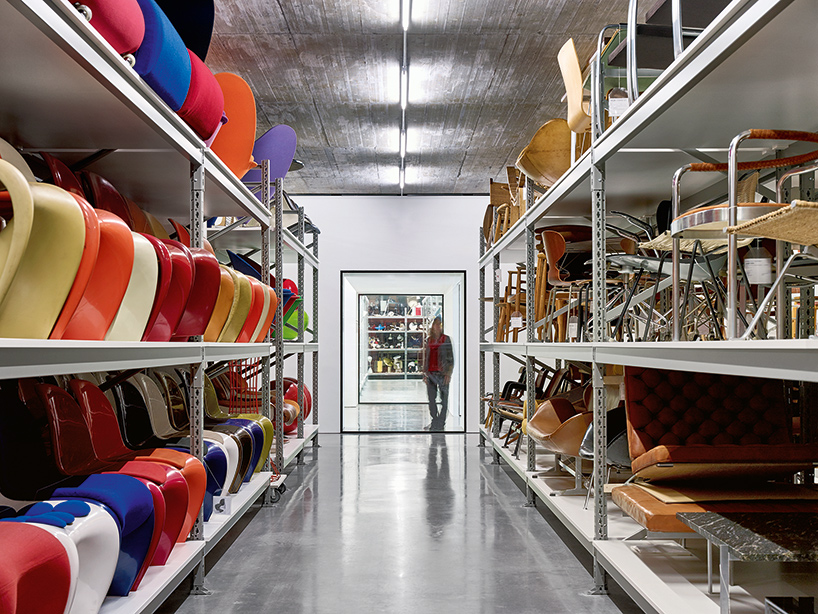
existing repositories remain in operation, becoming part of the museum’s overall presentation
image © vitra design museum
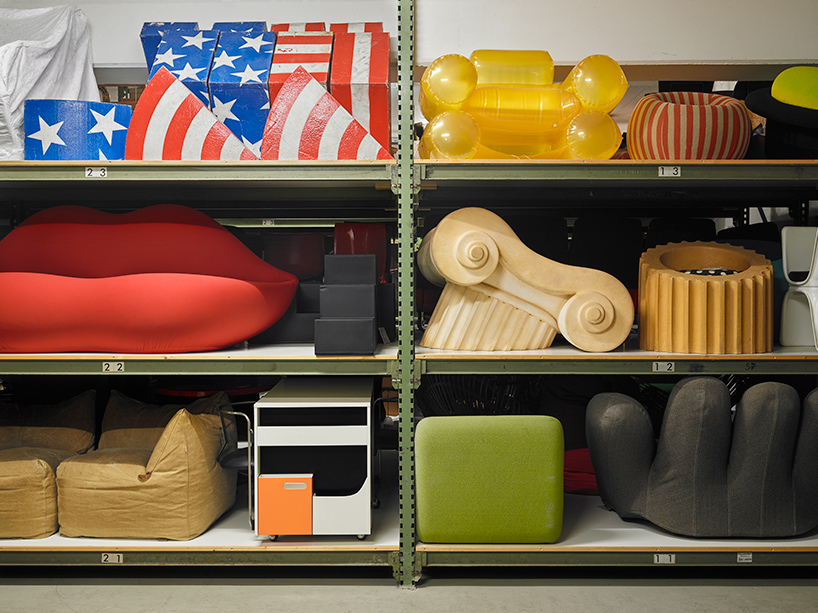
the structure provides a venue for presenting a selection of key objects
image © vitra design museum, florian böhm
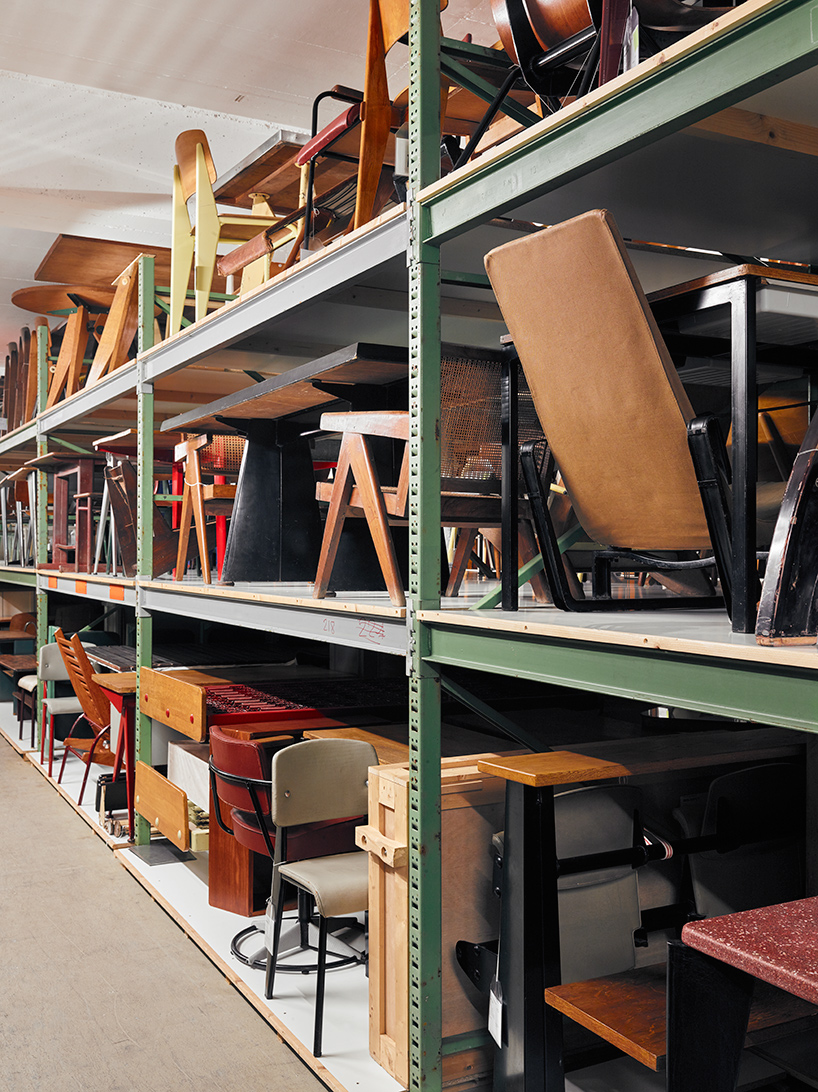
until now, the museum’s collection has never been on permanent display
image © vitra design museum, florian böhm
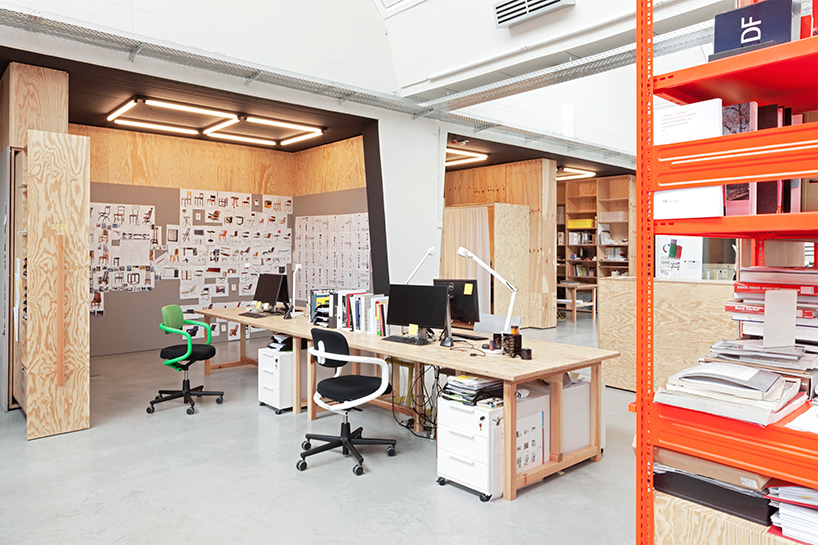
a further section links the building to the offices of the vitra design museum
image © vitra design museum, daniele ansidei
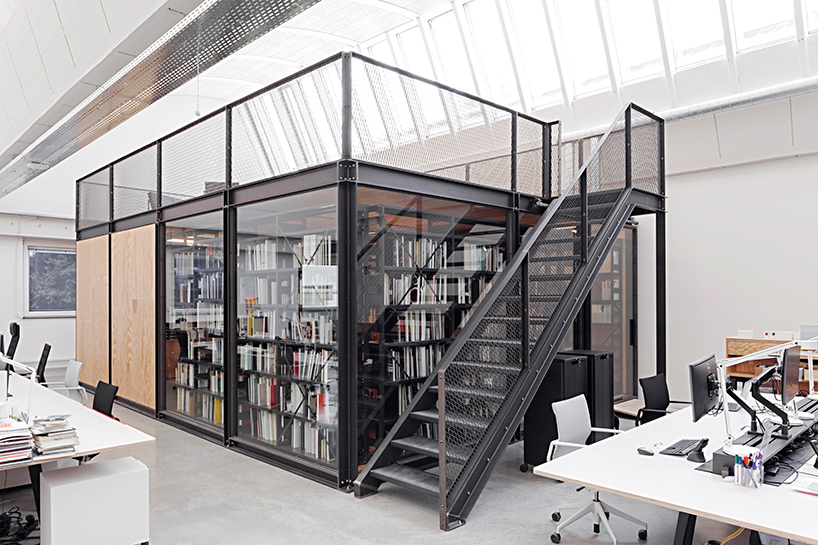
work stations within the offices of the vitra design museum
image © vitra design museum, daniele ansidei
project info:
architects: herzog & de meuron, basel
interior design: dieter thiel, basel
curatorial concept: mateo kries, janna lipsky
project management: marc zehntner
head of collection: susanne graner
curators of collection: serge mauduit, heng zhi
content coordination: jolanthe kugler
graphics: onlab, berlin
total floor space of schaudepot: approx 1,600 sqm
objects in permanent exhibition: approx. 410
exhibitions per year: 1 permanent exhibition, 3 temporary exhibitions















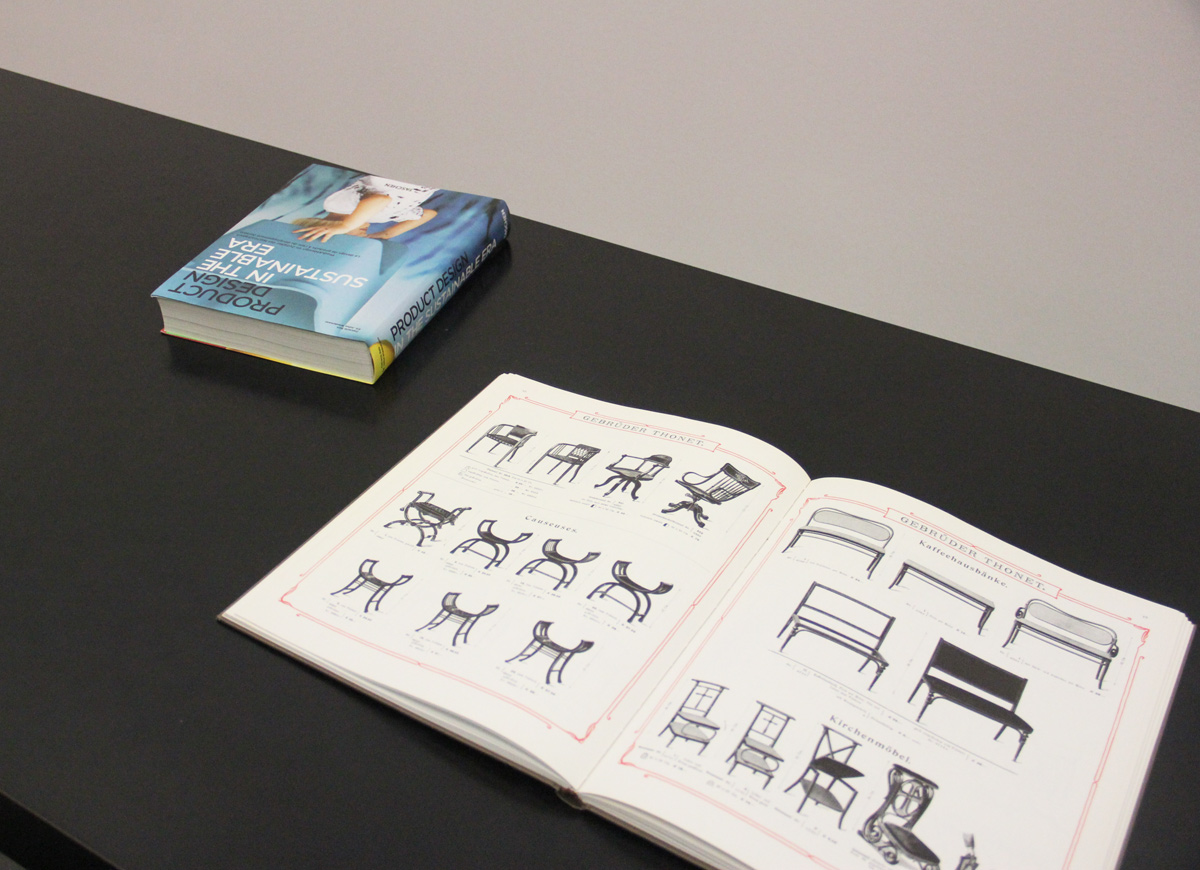
architecture in germany (305)
herzog and de meuron (179)
julien lanoo (22)
vitra (99)
PRODUCT LIBRARY
a diverse digital database that acts as a valuable guide in gaining insight and information about a product directly from the manufacturer, and serves as a rich reference point in developing a project or scheme.
